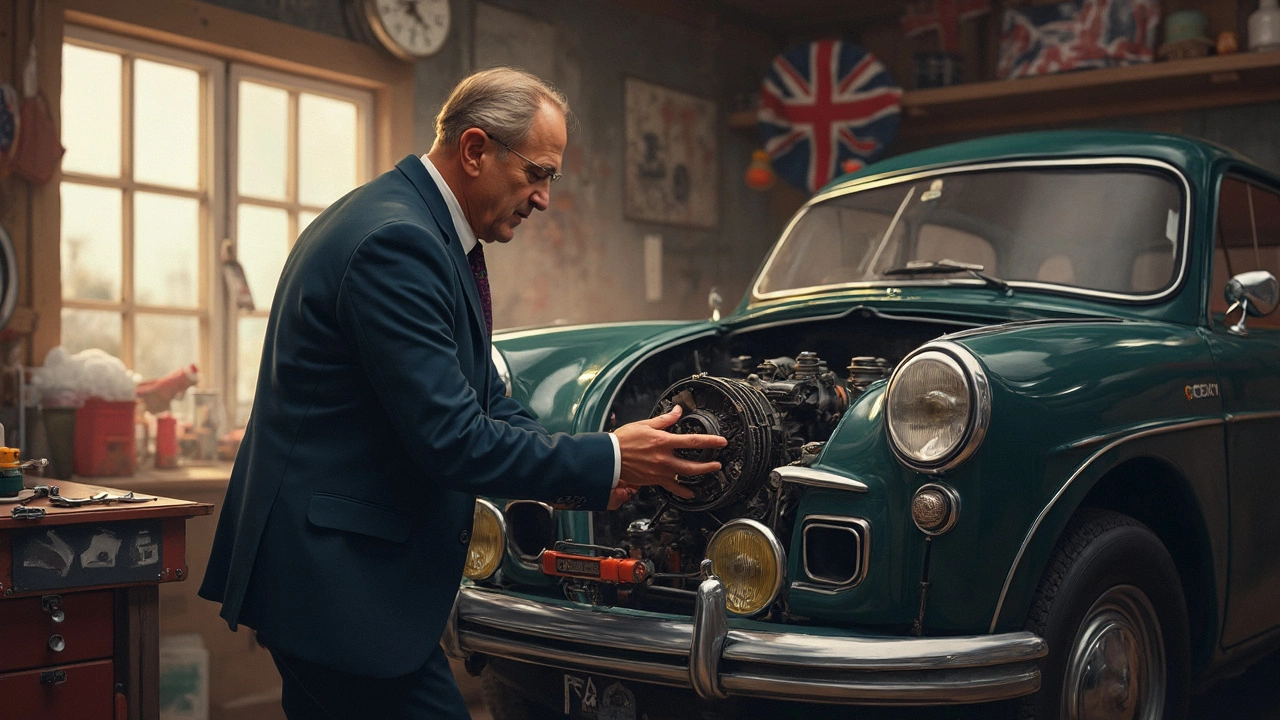So, you’re cruising down the road, and suddenly, your car feels a bit off. Could it be the clutch acting up? Knowing when your clutch needs some love can save you from bigger headaches and expenses down the line.
The clutch might be small, but it plays a huge role in controlling the power flow between your engine and wheels, making every drive smooth as butter—when it’s working right, that is. But how do you know when it’s not?
- Why Test Your Clutch?
- Signs Your Clutch Needs Attention
- Simple Clutch Testing Methods
- What to Do If Your Clutch Fails
- Regular Maintenance Tips
Why Test Your Clutch?
Alright, let’s get to it. Why should you even bother testing your clutch? Well, the short answer is that it keeps your car from turning into a lawn ornament. When your clutch is in good shape, your car accelerates smoothly, shifts gears without a hiccup, and generally behaves on the road. Ignoring it could leave you stalled and calling for roadside assistance, which isn’t fun.
For starters, testing your clutch helps catch issues before they snowball into expensive fixes. You know that weird burning smell that could occasionally sneak up on you? It might be the clutch. And if you’ve ever felt like your car is revving without moving any faster, that’s clutch slippage. Testing can help confirm these suspicions early.
Another cool reason is about efficiency. A well-functioning clutch helps improve fuel economy. Who doesn’t want to save a few bucks at the pump? Testing your clutch performance keeps your journey smooth and fuel-efficient.
Let’s talk stats for a second. Clutch failure is one of the top five breakdown reasons in manual cars. That’s quite a rank, right? Checking it regularly can lower the chances of becoming part of that stat.
In short, by knowing your clutch's condition, you can drive with confidence, save money, and avoid unexpected car troubles. Isn’t it worth a little bit of your time?
Signs Your Clutch Needs Attention
Ever felt like your ride's not as smooth as it used to be? Your clutch might be trying to tell you something. A healthy clutch makes changing gears a breeze, but when it's on the fritz, it can turn your driving experience into a bumpy ordeal.
One of the first signs of trouble is a slipping clutch. If you notice the engine revs climbing without a matching increase in speed, that's a red flag. It's as if your vehicle is singing without dancing—definitely not what you want when you hit the road.
Look out for odd noises when you press the clutch pedal. A noticeable squealing or growling noise isn't just embarrassing—it's your car's way of crying for help. Similar sounds when shifting gears can also be an indicator.
If your clutch pedal feels spongy or harder than usual, it could be a sign of hydraulic issues or wear. Imagine stepping on a sponge or, worse, a brick. Neither is normal, and both need checking out.
Lastly, the smell of burning rubber when you're driving can be a major giveaway. It's almost like a barbecue gone wrong under your hood, a definite clue that your clutch is overheating and possibly damaged.
Being mindful of these signs and acting promptly can save you from unwanted hassle and a dent in your wallet. Remember, noticing these signals sooner than later can keep your clutch working like a champ.

Simple Clutch Testing Methods
Alright, so you're suspecting that your clutch isn't performing at its best. Don't worry, checking it out is something you can do without needing a mechanic’s expertise. Here's how to test your clutch right from your driveway.
1. Start with the Clutch Pedal Feel: When you press the clutch pedal, it should feel smooth, not too stiff or spongy. If it's heavy, it might indicate wear or hydraulic issues.
2. Do the Rollback Test: Find a safe incline. With your car in a low gear, release the clutch slowly. If the car rolls back or if you have to rev the engine a lot to move forward, there could be a problem.
3. Listen for Unusual Noises: Start your car and depress the clutch. If you hear squealing or grinding noises, it's time to take a closer look. These sounds might be your clutch release bearing calling for help.
4. Assess the Bite Point: Without over-revving, note where the clutch engages. The bite point should be around the middle. If it’s too high or too low, it’s a signal that adjustments—or even a replacement—might be needed.
5. Check for Clutch Slippage: Drive at a moderate speed and press the gas pedal sharply. If the engine revs up without a corresponding increase in speed, your clutch might be slipping.
Even if these checks show issues, it's not all doom and gloom—it might just need some TLC, like adjustments or hydraulic fluid top-up, instead of a full-on replacement. Keep an eye on these basic tests to nip any clutch problems in the bud and keep your rides smooth and hassle-free.
What to Do If Your Clutch Fails
Okay, picture this: your trusty vehicle suddenly won’t shift gears properly. That's a major heads-up that your clutch might have just thrown in the towel. While it might sound like a disaster, knowing what steps to take can actually make the process way less stressful.
First off, if you suspect something's wrong, try to test your clutch in a safe area. Find a nearby safe zone—like a parking lot—and see if you can engage gears without excessive force or strange noises. If the clutch pedal feels weird or you hear grinding, it’s time to act.
"A failing clutch doesn’t mean the end—consider it an opportunity for a vehicle tune-up," says automotive expert, Sarah Kingston.
When a professional check-up becomes inevitable, have a plan:
- Stop Driving Immediately: Continuing to drive with a faulty clutch can lead to more severe damages and a bigger repair bill.
- Get Your Car Towed: Call for a tow to your mechanic to avoid any further damage while ensuring your safety.
- Explain the Symptoms: When you get to the shop, explain exactly what’s happening. The more details, the better the diagnosis they can give you.
- Consider a Replacement: Sometimes the only fix might be installing new clutch kits. Ask about your options, including cost and expected lifespan.
If you're unsure about mechanics, seek a reputable source. Word of mouth or reviews online can guide you to someone trustworthy. The key here is honesty and clarity, both with yourself and whoever’s fixing it.
A little prep and action can really make a clutch issue a not-so-big deal in the end. Taking quick, organized steps will not only keep your car running but also singlehandedly save you from a lot of hassle.

Regular Maintenance Tips
Keeping your clutch in good shape isn’t just about avoiding breakdowns on the highway. With a little regular upkeep, you can extend the life of your clutch and keep your car running smoothly.
First things first, pay attention to how you drive. Avoid riding the clutch—a habit most of us are guilty of from time to time. This can cause unnecessary wear and tear, especially in traffic jams where the temptation to keep your foot partially engaged is strong.
Regular inspection is key. Every few months or so, take a look at your clutch pedal. You want to feel a smooth, consistent action. If it feels spongy or loose, it might be time for an adjustment or replacement.
- Keep the clutch fluid clean and topped up if you have a hydraulic clutch. Low or dirty fluid can affect performance.
- Pay attention to strange noises. Grinding or squeaking can indicate a problem.
- Check for leakage around the master or slave cylinders, as this can signal hydraulic issues.
If your clutch is slipping, meaning it’s not fully engaging, it’s a sign to get it checked sooner rather than later. Regularly testing your clutch performance and being mindful of how it feels when shifting gears can help you catch problems early.
To keep everything documented and organized, consider keeping a log of any strange behavior or issues you notice. Not only does this help you communicate effectively with a mechanic, but it also aids in spotting recurring problems.
Finally, when in doubt, consult with a professional. Regular service appointments that include clutch testing can catch problems you might miss, giving you peace of mind that your ride is in top condition.






